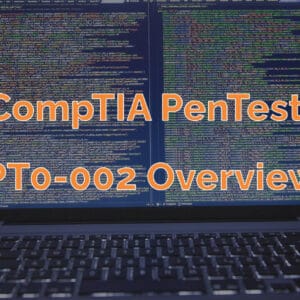There are way more commands to run in Windows than you’re currently using. Here’s a list of useful run commands for Windows you can start using right now if you already aren’t.
Enjoy the speed!
Table of Contents
Office Shortcuts
winword – Microsoft Word
excel – Microsoft Excel
powerpnt – Microsoft PowerPoint
msaccess – Microsoft Access
outlook – Microsoft Outlook
ois – Microsoft Picture Manager
Regular Run Commands
Calc – Calculator
Cfgwiz32 – ISDN Configuration Wizard
Charmap – Character Map
Chkdisk – Check Disk
Cleanmgr – Hard Drive Clean Up
Clipbrd– Windows Clipboard Viewer
Cmd – Command Window
Control – Control Panel
Dcomcnfg – DCOM User Security
Debug – Assembly Language Programming Tool
Defrag – Defragmentation Tool
Drwatson – Records Programs Crash and Snapshots
Dxdiag – DirectX Diagnostic Utility
Explorer – Windows Explorer
Fontview – Graphical Font Viewer
Ftp – File Transfer Protocol Program
Hostname – Computer Name
Ipconfig – IP Configuration For All Network Adapters
Jview – Microsoft Command-Line Loader For Java Classes
MMC – Microsoft Management Console
Msconfig – Startup Files
Msinfo32 – Microsoft System Information Utility
Nbtstat – Stats and Current Connections Using NetBios over TCP/IP
Netstat – All Active Network Connections
Nslookup – Local DNS server
Odbcad32 – ODBC Data Source Administrator
Ping – Ping Sample Data To Specified Host
Regedit – Registry Editor
Regsvr32 – Register/De-Register DLL/OCX/ActiveX
Regwiz – Registration Wizard
Sfc /scannow – System File Checker
Sndrec32 – Sound Recorder
Sndvol32 – Volume Control
Sysedit – System Startup Files (config.sys, autoexec.bat, win.ini, etc.)
Systeminfo – System Information In Text Console
Taskmgr – Task Manager
Telnet – Telnet Program
Taskkill – Kill Processes Using Command Line Interface
Tskill – Reduced Version Of Taskkill From Windows XP Home
Tracert – Traces and Displays All Paths Required To Reach Host Over Internet
Winchat – Simple Chat Program For Windows Networks
Winipcfg – IP Configuration
Wupdmgr – Windows Update
Management Consoles
certmgr.msc – Certificate Manager
ciadv.msc – Indexing Service
compmgmt.msc – Computer Management
devmgmt.msc – Device Manager
dfrg.msc – Disk Defragment
diskmgmt.msc – Disk Management
fsmgmt.msc – Folder Sharing Management
eventvwr.msc – Event Viewer
gpedit.msc – Group Policy -XP Pro only
iis.msc – Internet Information Services
lusrmgr.msc – Local Users and Groups
mscorcfg.msc – Net Configurations
ntmsmgr.msc – Removable Storage
perfmon.msc – Performance Manager
secpol.msc – Local Security Policy
services.msc – System Services
wmimgmt.msc – Windows Management
Shortcuts
access.cpl – Accessibility Options
hdwwiz.cpl – Add New Hardware Wizard
appwiz.cpl – Add/Remove Programs
timedate.cpl – Date And Time Properties
desk.cpl – Display Properties
inetcpl.cpl – Internet Properties
joy.cpl – Joystick Properties
main.cpl keyboard – Keyboard Properties
main.cpl – Mouse Properties
ncpa.cpl – Network Connections
ncpl.cpl – Network Properties
telephon.cpl – Phone And Modem Options
powercfg.cpl – Power Management
intl.cpl – Regional Settings
mmsys.cpl sounds – Sound Properties
mmsys.cpl – Sounds And Audio Device Properties
sysdm.cpl – System Properties
nusrmgr.cpl – User Settings
firewall.cpl – Firewall Settings (sp2)
wscui.cpl – Security Center (sp2)
To give a light refresher, you can get to the Run dialogue by:
All Windows Versions
Windows key + R
Windows 8.1
- Right click Start
- Click Run
Windows 8
- Press Windows Key
- Or move mouse to lower left corner of screen and click mouse
Windows 7 and Vista
- Click Start
- Click mouse in Search Box and begin typing
Windows XP
- Click Start
- Click Run







